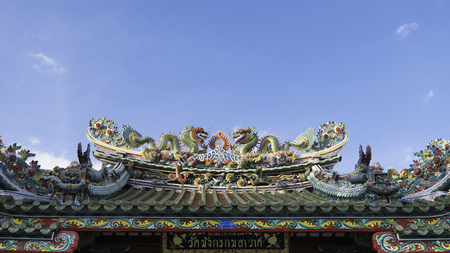Introduction to Feng Shui Compasses
Feng Shui compasses, referred to as luopan, play a pivotal role in the ancient Chinese art of geomancy. Unlike the familiar Western compass, which is primarily a navigational tool, the luopan is both a spiritual and practical instrument designed to harmonise environments according to complex cosmological principles. Rooted deeply in Chinese tradition, these compasses have been used for centuries by Feng Shui practitioners to determine the most auspicious orientation for buildings, graves, and even entire cities. In modern times, as interest in holistic living and Eastern philosophies continues to grow across the UK and beyond, the luopan’s relevance has expanded from traditional Chinese communities to a broader audience seeking balance and well-being in their homes and workplaces. This comprehensive guide will explore the historical background, distinctive features, and contemporary applications of Feng Shui compasses—offering insight into how they differ from their Western counterparts and why they remain significant in today’s increasingly globalised world.
2. Historical Background
The origins of the Feng Shui compass, also known as the Luo Pan, date back thousands of years in Chinese history. This unique instrument was first developed during the Han Dynasty (202 BC – 220 AD), primarily for geomantic and ritual purposes rather than navigation. Unlike Western compasses, which emerged as navigational tools during the Middle Ages, the Feng Shui compass was designed to align living spaces and structures with natural energies and cosmic forces. The Luo Pan integrates traditional Chinese cosmology, including elements such as the Bagua, Yin-Yang theory, and the Five Elements (Wu Xing), making it a multifaceted tool beyond simple direction-finding.
Key historical developments demonstrate how the evolution of the Feng Shui compass diverged from its Western counterpart. Early Chinese compasses were made using lodestone and were shaped like spoons placed on bronze plates; these were used to determine auspicious orientations for tombs and buildings rather than for seafaring or exploration. By contrast, Western compasses were refined in medieval Europe primarily for maritime navigation. Over time, the Luo Pan evolved into a complex device featuring concentric rings displaying various formulas and information essential to Feng Shui practice.
| Aspect | Feng Shui Compass (Luo Pan) | Western Compass |
|---|---|---|
| Primary Use | Geomancy, alignment of structures with energy flows | Navigation, orientation, exploration |
| Historical Origin | Han Dynasty China (c. 2nd century BC) | Medieval Europe (12th-13th centuries AD) |
| Main Features | Multiple rings with cosmological data; Bagua symbols; directional markers | Simple magnetic needle; cardinal directions |
| Cultural Significance | Spiritual and environmental harmony; integral to traditional Chinese architecture | Practical tool for travel and mapping; integral to European exploration |
The divergence in design and function between Eastern and Western compasses reflects broader differences in cultural priorities: while Western societies focused on conquering physical space through navigation, Chinese tradition emphasised harmonising built environments with unseen natural forces. Understanding this historical context is essential for appreciating why the Feng Shui compass remains a central tool in Chinese culture and how it differs fundamentally from its Western equivalents.
![]()
3. Structure and Features of a Feng Shui Compass
The luopan, or traditional Feng Shui compass, is a remarkable instrument whose physical structure and features set it apart from the standard Western compass. Understanding these distinctions is essential for anyone seeking to appreciate its complexity and cultural significance.
Physical Components of the Luopan
The luopan typically consists of several core elements. At its base lies a wooden or lacquered square platform, which provides stability and often contains symbolic engravings. Resting atop this base is a circular plate, known as the “heaven dial,” which rotates independently. In the centre sits a magnetic needle encased within a transparent dome, much like a Western compass, but this is where similarities largely end.
Unique Markings and Rings
One of the most distinctive features of the luopan is its intricate array of concentric rings—sometimes numbering up to 40 or more. These rings are inscribed with Chinese characters, trigrams from the I Ching, the 24 compass directions (or mountains), heavenly stems and earthly branches, as well as other esoteric symbols used in Feng Shui calculations. Each ring provides specific information for interpreting energy flows and making geomantic decisions, reflecting both astronomical and philosophical systems unique to Chinese culture.
Intricate Design Versus Simplicity
In stark contrast to Western compasses—which primarily indicate cardinal directions using a simple dial and needle—the luopan is an encyclopaedic tool designed for multi-layered analysis. Its elaborate inscriptions require specialised knowledge to interpret, making it both a scientific instrument and an artefact of cultural heritage. The overall design embodies centuries of tradition, blending artful craftsmanship with mathematical precision. This complexity not only distinguishes the luopan visually but also underlines its function as a tool for harmonising spaces according to ancient principles rather than merely providing navigational bearings.
4. Practical Application in Feng Shui
Feng Shui practitioners employ the Luo Pan, or Feng Shui compass, as a sophisticated tool to analyse spatial orientation and energy flow in various environments. Unlike standard Western compasses, which focus primarily on magnetic north for navigation, the Luo Pan integrates cosmological principles, directional energies, and detailed rings of information to guide decisions about building placement, interior arrangement, and landscape design.
Using the Feng Shui Compass: Step-by-Step Process
- Establishing True North: The practitioner positions themselves at the centre of the site or room, ensuring the compass is level for an accurate reading.
- Aligning the Compass: The red thread or pointer on the Luo Pan is aligned with the main door or entrance, reflecting the structures principal orientation.
- Interpreting Compass Rings: Multiple concentric rings provide layered information—such as trigrams, earthly branches, and degrees—which are interpreted to assess auspicious and inauspicious directions.
- Determining Energy Flow: By referencing these readings against traditional formulas (e.g., Eight Mansions, Flying Stars), practitioners diagnose how Qi (energy) moves through a space.
- Making Recommendations: Based on analysis, adjustments are suggested for room layout, furniture placement, and even garden design to harmonise with beneficial energies.
Typical Applications in Various Contexts
| Context | Application of Feng Shui Compass |
|---|---|
| Building Design | Selects optimal site orientation and entry placement for maximum positive Qi |
| Interior Arrangement | Guides positioning of key rooms (bedroom, kitchen) to harness favourable directions |
| Landscape Planning | Aligns paths, water features, and plantings with auspicious compass bearings |
| Business Premises | Advises desk and entrance placements for prosperity and wellbeing of staff |
The British Context: Integrating Feng Shui with Local Architecture
In Britain, where architectural traditions differ markedly from those in East Asia, professional consultants adapt their methods by considering both the Luo Pan’s guidance and local building conventions. For example, period homes with north-facing gardens or Victorian terraces may require tailored solutions that respect both heritage features and Feng Shui principles. In such cases, a balance is sought between classical Chinese techniques and practical adaptations suited to UK buildings and landscapes.
5. Main Differences Between Feng Shui and Western Compasses
Understanding the essential differences between Feng Shui compasses—known as luopan—and standard Western compasses is crucial for appreciating both their practical uses and cultural significance. While at first glance, both instruments may appear similar due to their shared purpose of orientation, a closer examination reveals profound contrasts in purpose, design, and methodology.
Purpose: Philosophical Versus Navigational Intent
The primary distinction lies in intent. The luopan is fundamentally a tool for metaphysical analysis, used by Feng Shui practitioners to evaluate the flow of energy (qi) within a space and align human environments harmoniously with natural forces. In contrast, Western compasses are utilitarian navigation instruments, designed principally for determining direction and aiding travel or map reading. This divergence reflects differing worldviews: the luopan’s holistic focus on environmental balance versus the Western compass’s emphasis on geographic precision.
Design: Complexity Versus Simplicity
From a design perspective, the luopan is notably more complex than its Western counterpart. Luopans are typically circular or square plates inscribed with numerous concentric rings, each bearing Chinese characters, trigrams, stems, branches, and other symbolic information vital to Feng Shui calculations. The Western compass, by comparison, is straightforward—comprising a magnetic needle that points north and basic cardinal markings. This simplicity suits its navigational role but lacks the layered interpretative detail found in a luopan.
Methodology: Interpretation Versus Measurement
The methodologies applied also differ significantly. A luopan’s readings demand interpretative skill; practitioners must decode the relationships among rings, directions, and symbols according to traditional cosmological principles. Accurate usage requires extensive knowledge of Chinese metaphysics and geomancy. Meanwhile, using a Western compass is largely procedural: one aligns the needle with north and reads off degrees or directions—no further interpretation required beyond basic orientation skills.
Cultural Contexts and Practical Implications
These differences are further accentuated by their cultural contexts. The luopan embodies centuries of Chinese philosophical thought about man’s relationship with nature, while the Western compass evolved alongside exploration and empirical science. For users in the UK interested in adopting Feng Shui practices, recognising these distinctions clarifies why a standard compass cannot substitute for a luopan in authentic consultations; each serves not only different functions but also reflects contrasting approaches to understanding space and direction.
6. Modern Relevance and Integration in the UK
In contemporary Britain, the adoption and adaptation of Feng Shui compasses—known as Luo Pan—reflect a fascinating blend of Eastern tradition and Western modernity. As interest in holistic wellbeing and interior harmony has grown, so too has public curiosity about Feng Shui principles. British homeowners, architects, and interior designers increasingly seek to incorporate these ancient practices into their projects, particularly in urban centres like London and Manchester. While the technical intricacies of using a Luo Pan may initially seem daunting, especially when contrasted with the straightforward functionality of the Western compass, dedicated practitioners and consultants have made efforts to demystify its use through workshops, books, and digital resources tailored for UK audiences.
Adoption Across Diverse Communities
The multicultural landscape of the UK provides fertile ground for such cross-cultural integration. Feng Shui consultancies now operate in most major cities, offering advice that is sensitive to both traditional Chinese beliefs and British sensibilities. For example, while classic Feng Shui might emphasise cardinal directions in relation to qi flow, British adaptations often consider property layouts typical to Victorian or Edwardian architecture, as well as the country’s unique seasonal patterns.
Adaptation to Local Contexts
British interpretations of Feng Shui compasses tend to focus on practical outcomes: maximising comfort, promoting wellbeing, and creating aesthetically pleasing spaces. Consultants may simplify some of the more esoteric aspects of the Luo Pan for clients unfamiliar with its complexity, instead highlighting core concepts such as orientation, balance, and the interplay between built environments and natural light—a concept not entirely foreign to traditional British architectural approaches.
Cultural Significance and Ongoing Relevance
The continued relevance of Feng Shui compasses in the UK underscores an openness to global ideas while maintaining a distinct local flavour. This synthesis is evident in new-build developments that incorporate elements like mindful landscaping or strategic room placement inspired by both Feng Shui and British garden design traditions. Ultimately, the presence of the Luo Pan in Britain today is more than a passing trend; it represents an evolving dialogue between cultures, where ancient tools find fresh significance amid modern lifestyles.


